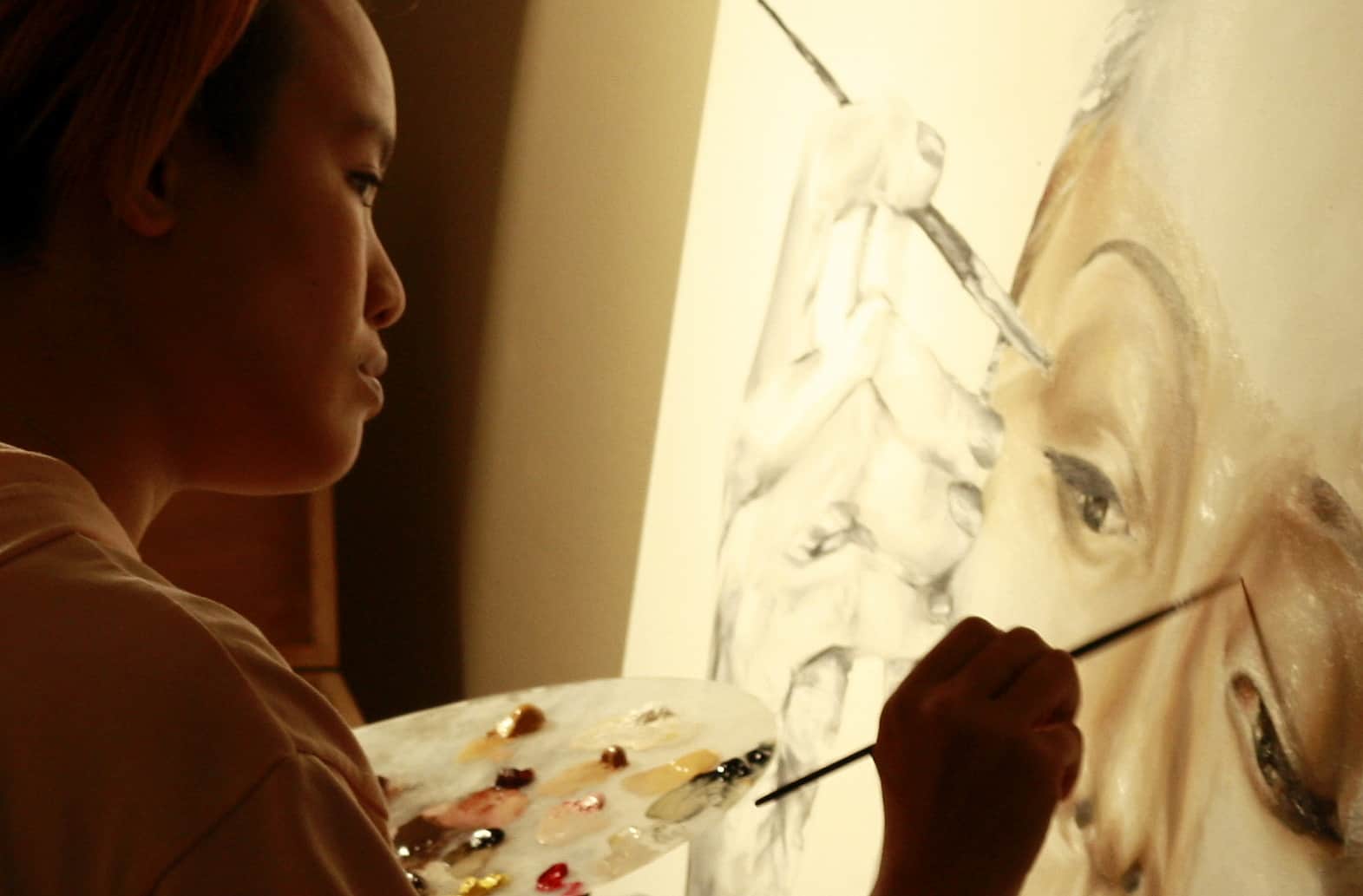See also: Man Yu celebrates 10 years of hyper-realistic artwork at the Club Unión
Through gentle, pastel brush strokes, the self-taught artist Man Yu depicts human beauty in the most realistic way possible. Born in Hong Kong, she moved to Costa Rica with her family at the age of eight, looking for a better life. Mastering different art techniques such as oils, pastels and drawing has been a constant in her life since she can remember.
Her painting career began in earnest when she worked with various artists such as Nelly Eyo (Argentina), Julio Escámez (Chile) and Miguel Hernández (Costa Rica). Today, at the age of 38, Man Yu has participated in various exhibitions in Costa Rica, United States, Morocco, France, Nicaragua, Argentina, and Spain. Her current collection is called Traje Humano (Human Suit), which depicts the human body on a hyper-realistic level .
Man Yu visited the offices of The Tico Times in Barrio Amón to discuss her life and work. Excerpts follow.
Why did you choose to become an artist?
I used to be uncomfortable with being told that I’m an artist. I really don’t define myself as an artist. I’m an apprentice. I’m a human. I also like to work with humanitarian crews and rescue animals.
I didn’t decide to be a painter. I met Miguel Hernández and he was one of my masters. He was the one who encouraged me to exhibit my work. That’s why he was always present in my first exhibitions. He was always watching out for me. He saw certain potential in me and gave me that first push.
How do you choose your color palette?
There’s the signature, the trace and the color palette. The color palette is as important as the signature and traces of an artist; that’s why each artist has his or her particular tonalities and colors. It’s all an experimentation to combine with pastels. My palette consists of the six primary colors and grey tones. I don’t know how to tell you how I choose it: I let it flow, use a color and it becomes part of my palette. When I create the artwork, if something does not work, I dismiss it.
Part of my color palette consists of dirty residues. Supposedly when you paint, the work must be clean, but I don’t like a clean piece of work. At the end, that disaster I have on my palette, I combine it and begin creating my own style with those colors. That’s the DNA or soul of the colors. Everything that comes out of those primary colors becomes a grey, dirty mixture. Many people throw it away, but I use it.
What is your process for creating a piece of art?
First comes the conceptual part. You’re sitting down, lying down, dreaming or sleeping. You basically have to find yourself. You need to know what you’re going to do and compose everything inside of your mind. Feel it. Cry it. Investigate within yourself.
Then you search for visual support: images, landscapes, sensations, music, having conversations with people. The first process is very meditative. The tedious part is the drawing part, because the [conceptual] work is already done. The process of translating that into an artwork takes its time. That’s why I’m not very attached to my [finished] works: after seeing the piece, the magic is done. The magic occurs in the composition.
For me it’s very funny to see people take a painting and make it into a mug or shirts, as if it were a masterpiece. What I see is the residue of all this magic that happened. That’s why I’m one of the few painters with no reproductions. I only give them to my friends.
Why do you like to paint the human body?
It’s the most beautiful thing. I like the imperfection of the human body. If I were told to draw and paint a model with the socially perfect body that has a plastic-like skin, I think I wouldn’t be as inspired. When I paint a normal body I notice all of the details. I see the stretch marks, the veins. You get lost in the complexity of the human being. Each one of us is a universe, and since I’m not big enough to see the entire universe, I find those universes in each person. It’s beautiful. Imagine that the ears are like a never-ending maze. I can completely get lost in an ear, a nail, a smile…everything. Everything is beautiful. The pores. The hair. It’s perfect. It’s my obsession.
What can be more beautiful than this, this that moves? [Makes a gesture with her hand.] It’s constant. It ages. It’s ephemeral. I can’t even explain. It’s so much imperfection and perfection [together]. Words fall short.
We’re so perfect and complex that we can stand under the sun and create our own calcium and vitamins. We’re very interesting.
How does painting a female body and a male body differ?
The male body is more challenging because it has many angles. It’s very interesting to explore. A woman’s body is very romantic. The female and male bodies are completely different energies. One is tough and the other is soft. The male body is much more coarse. [The male and female bodies] are like the yin yang. They’re contrary to each other.
By painting these two different bodies I can explore much more what I want to portray. I can encompass all of the yin yang’s extremes.
Read more Weekend Arts Spotlight interviews here.
Our “Weekend Arts Spotlight” presents Sunday interviews with artists who are from, working in, or inspired by Costa Rica, ranging from writers and actors to dancers and musicians. Do you know of an artist we should consider, whether a long-time favorite or an up-and-comer? Email us at kstanley@ticotimes.net.






